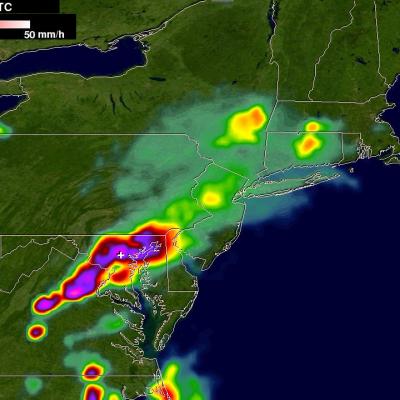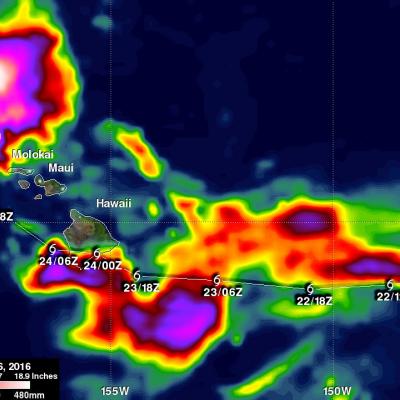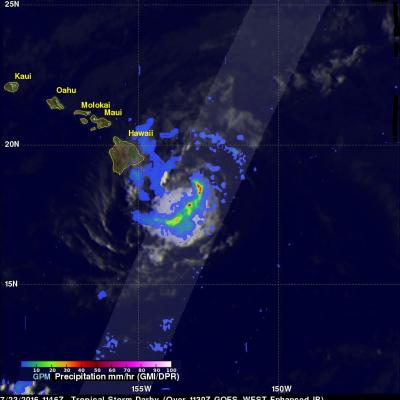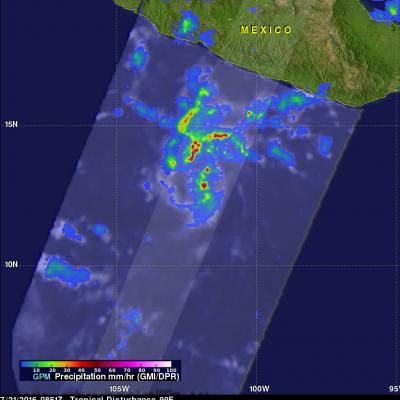GPM Looks at Historic Flooding from Slow-Moving Maryland Storms
NASA analyzed rainfall data from slow-moving storms that triggered flash floods over parts of central Maryland and caused devastating flooding in historic Ellicott City, Maryland. A slow-moving line of heavy thunderstorms dumped as much as 6 to 7 inches of rain in about two hours' time during the evening of Saturday, July 30, over parts of Howard County in central Maryland, resulting in severe local flash flooding. The hardest hit area was the historic town of Ellicott City, where two people were trapped in their cars and drowned. The town suffered substantial damage to many buildings






